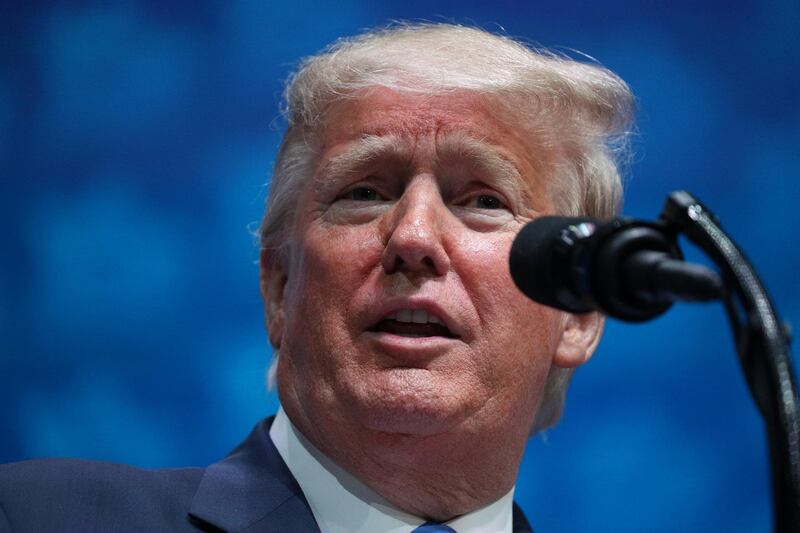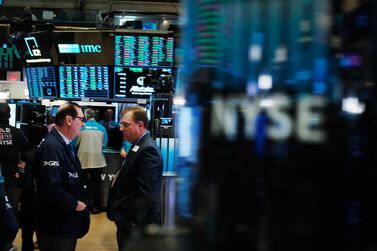A week that started with bad news over trade ended more positively with evidence the US economy, in particular the labour market, is in better-than-expected shape as the end of the year approaches.
With other news containing more disappointments than positives, however, the outlook for 2020 looks no less certain than it has been through most of 2019.
Trade issues once again returned to the surface over the UAE's long weekend, with US President Donald Trump restoring tariffs on steel and aluminium exports from Brazil and Argentina and threatening tariffs on $2.4 billion (Dh8.81bn) of luxury products from France. The latter was in addition to other tariffs proposed on a broader range of European Union exports to the US.
Perhaps most unsettling for markets was Mr Trump’s comments that he was in no rush to reach a trade agreement with China and that this may only happen after the US elections in November 2020. At this stage, it appears as if the tariffs on Chinese imports, scheduled to come into effect on December 15, will in fact go ahead, unless there is significant progress on a “phase one” deal in the coming week. Comments from Mr Trump’s economic adviser Larry Kudlow at the end of the week also cast doubt on whether those tariffs can be avoided.
If these tariffs do indeed happen, there is likely to be a reappraisal of growth prospects for the US and probably also the rest of the world. Recent market assumptions have been that a “phase one” trade deal would be reached and that this could reduce the need for further cuts in US interest rates as investor sentiment begins to improve.
The news at the end of last week that 266,000 new jobs were added in November has also reinforced this view that further rate cuts might not be needed, showing the US economy to be in a stronger position than was earlier thought. Although the data was boosted by the return of 41,000 striking General Motors car workers, it still showed a healthy pace of jobs growth across most sectors which helped bring the unemployment rate down to 3.5 per cent and underpin average earnings at 3.1 per cent.
However, other evidence of a recovery in the US economy was sketchier last week, with the US ISM Manufacturing Index moving deeper into contraction territory in November at 48.1, and with the ISM Non-Manufacturing Index also below expectations at 53.9, down from the October reading and pointing to slower growth in the services sector. On top of these, business investment has been weak and trade is understandably being squeezed.
In fact "mediocre growth with downside risks" was the common characterisation we received on a recent research trip to the US in contrast to the US Federal Reserve's description of the US economy as being "in a good place". Should a US-China trade deal fail to be reached, the chances are that those downside risks will again become prominent causing many to re-evaluate whether the Fed can hold off from cutting rates again after all.
Of course the rest of the world would also be susceptible to renewed downside risks emanating from a broadening trade dispute, given the limited recoveries currently under way. The Eurozone Manufacturing PMI was fractionally better than the flash reading in November, but still deep in recession territory, with Germany at the centre of that weakness. Eurozone services and composite PMIs were revised slightly higher than their flash estimates for November, coming in at 51.9 and 50.6 respectively. However, the data still suggests there is almost no growth in the eurozone economy in the fourth quarter of this year.
In the UK the composite PMI was also slightly higher than the flash estimate, but still below the neutral 50.0 reading. With such trends it is understandable that governments are coming under increasing pressure to do more, in an environment in which the scope for more central bank rate cuts is limited.
Whoever wins the UK election in the coming week will likely embark on a round of fiscal stimulus, while Japan has just announced a stimulus package worth $121bn. Other governments will probably need to come to the table if 2020 is to avoid being another year of underachievement.
Tim Fox is chief economist and head of research at Emirates NBD







